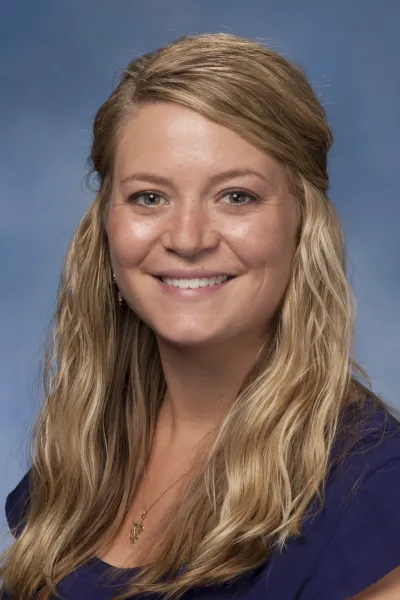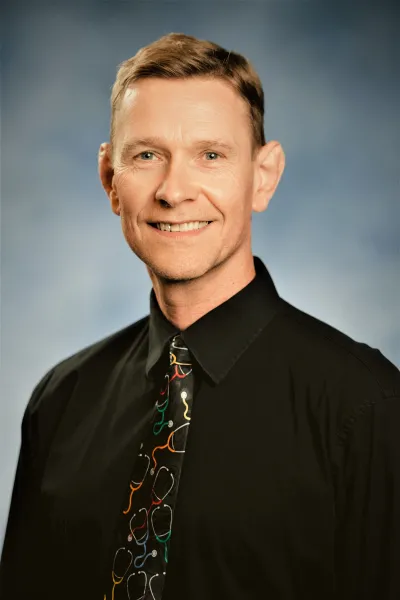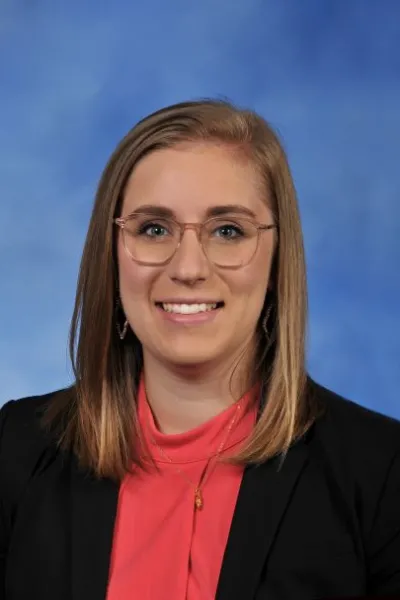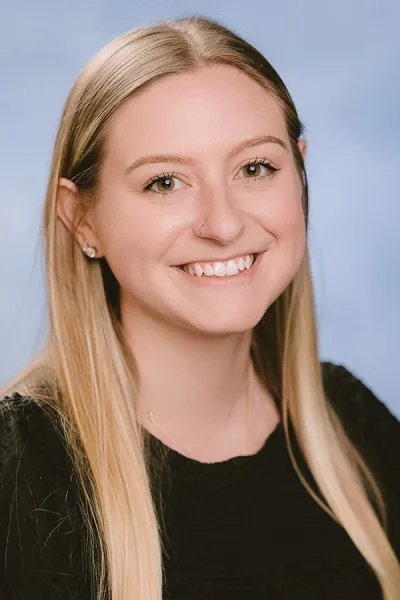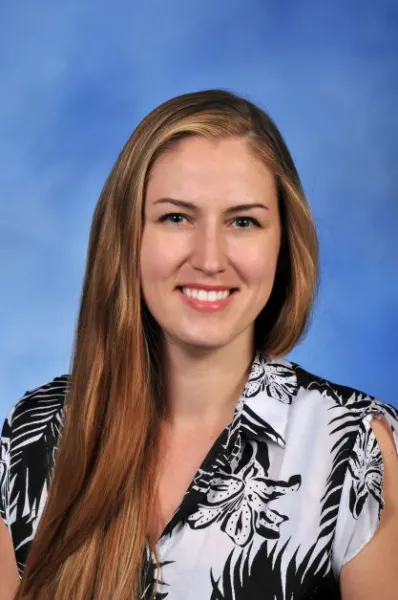Cardiology and Interventional
Medicine Residency
The Ohio State University College of Veterinary Medicine has offered clinical residency training in Cardiology since 1975. The program is ACVIM-approved and supervised by faculty members of the Cardiology & Interventional Medicine Service.
The residency is three years in duration and provides the trainee with focused clinical training in the specialty of veterinary cardiology and interventional medicine. The training program is designed to prepare the resident for a career in either clinical academic medicine or in specialty cardiology practice. The faculty mentors are interested in attracting outstanding resident candidates and do recognize that most applicants are still considering career options at the time of their application. We offer/require several dedicated “courses” the residents are required to take. These are highly relevant to clinical training and board certification and delivered within the Veterinary Medical Center during our normally-scheduled resident training periods (early AM, weekdays). The courses are taught by the cardiology faculty and include: electrocardiography I, II, and III; echocardiography, congenital heart disease, cardiac catheterization & angiography, and cardiovascular pathophysiology and pharmacology. Additionally, there is a monthly cardiopathology conference, monthly interventional cardiology rounds at Nationwide Children’s Hospital, and a weekly cardiology journal club. We also require the residents to audit an online statistics course offered by the OSU college of statistics, as well as attend a virtual clinical scientist training workshop (offered every other year). As with most programs, a research project is required with the expectation of the resident finishing a project and submission of a journal publication. Each resident has a specific dedicated research advisor as well as a 2-3 faculty member research committee to support the resident as they complete their clinical research project. Awarding funding (intramural or extramural) for the project is to be expected in the first year of the program, and those efforts are spearheaded by the research mentor in close collaboration with the resident.
Additional Residency Resources learn more about our veterinary health system
Objectives
The main programmatic outcomes of the residency include successful completion of the ACVIM qualifying and certifying examination in Cardiology and completion of a research project. These goals are met by combining an outstanding trainee with a well-structured program that spans three years. Specific objectives are focused on the resident developing:
- An understanding of the basis and mechanisms underlying cardiovascular (CV) diseases
- Expertise in the diagnosis and management of CV diseases affecting domesticated animals
- Competency in performing and interpreting noninvasive and invasive diagnostic studies of the heart and circulation
- Competency in performing standard catheter-based interventional CV procedures including catheterization and pacing
- Development of clinical and didactic teaching skills
- Development of basic clinical research skills with contribution to the veterinary literature
Faculty and Staff
Faculty members directly involved in support of the program currently includes two board-certified cardiologists, Dr. Jaylyn Rhinehart (Assistant Professor, Program Director) and Dr. Karsten Schober (Professor, Head of Clinical Service, Supervising Diplomate), who have extensive experience training residents. There are two cardiology residents in training at all times and there are two full-time, experienced technicians assigned to Cardiology and Interventional Medicine.
Other faculty members on site include those with specialties in internal medicine (including those focused on gastroenterology, nephrology/urology, neurology, and oncology) ophthalmology, radiology/ultrasound/ nuclear medicine, general and orthopedic surgery, anesthesiology, dermatology, emergency and critical care medicine, behavior, and theriogenology. Clinical pathologists and pathology residents support the hospital program. Anatomic pathologists and microbiologists are also on site to support clinical efforts and participate in a monthly cardiopathology conference. There is a good amount of daily interaction among services.
Our Team
Prerequisites and Applications
- All potential residents must meet the minimum requirements and qualifications (see Residency Program Handbook, CVM Graduate Program Handbook and Graduate School Handbook).
- Applicants must be either U.S. citizens or permanent residents of the U.S. the Ohio State University cannot sponsor or process F, J, or H-1B visa applications for resident positions. We also cannot accept TN visas. Successful applicants must be available to report to The Ohio State University Department of Veterinary Clinical Sciences no later than the scheduled beginning of the program.
- Applicants must be graduates of an AVMA-recognized College or School of Veterinary Medicine and have completed a one-year rotating internship or acceptable equivalent clinical experience.
- All requirements must be met to hold and maintain a limited license to practice Veterinary medicine in the State of Ohio – click here for information on licensure requirements.
- Currently admission requirements include:
- a minimum 3.0 GPA for all undergraduate coursework
- a minimum 3.0 GPA for professional (veterinary degree) studies;
- a minimum 3.3 GPA for all graduate coursework;
Beyond these minimal requirements, the Cardiology Faculty consider at least ten other factors before ranking applicants for our residency program. These include: 1) Academic record and class rank; 2) Potential for self-learning; 3) Clinical proficiency demonstrated during a high-quality internship or clinical training program; 4) Evidence of common sense and practicality; 5) Demonstrated ability to work cooperatively with others; 6) Professional and personal ethics and comportment; 7) Communication skills; 8) Desire to train within an academic veterinary center, contributing to the instruction of professional students; 9) Interest in contributing to the clinical research program of the Cardiology & Interventional Medicine Service; and 10) Personal or professional experiences that further distinguish the applicant.
Cardiology residencies are highly competitive and very limited in number. Currently Ohio State takes one cardiology resident every three years. The overall application process involves:
- standard application by candidates through the VIRMP “Match” system;
- review of applications by the faculty (including contacting of references);
- inviting selected candidates for interview (in-person or virtual - to be determined).
Candidates wanting an early decision regarding an interview, are urged to submit credentials to VIRMP by late November 2022. The Match program does not provide a very large time window between application and rankings, and we do try to review applications immediately so we can invite candidates as soon possible for our interview date.
Employment and Benefits
- Salary
- Health insurance
- Travel allowance
- Personal + Professional days leave (from policy)
- External consultation and employment
- Licensure
- Tuition Assistance
Orientation
During the first week of the residency program, all incoming residents participate in a comprehensive orientation program to introduce them to the department, college and university, complete necessary documentation, and to facilitate integration into our program and activities. Once the resident starts on the cardiology clinical service there is constant faculty supervision of clinical activities rotated among the three clinical cardiologists. There is also a faculty backup schedule for off-hours and holiday emergencies/procedures. As might be expected, residents are gradually introduced to the medical, diagnostic, and interventional practices of the service at a rate appropriate with their experience and training.
Advisors and Mentoring
Each resident is assigned a primary ACVIM clinical advisor at the onset of the program and a primary research advisor (later, during the first year). The clinical research project is further supported by a committee of faculty members. Residents are provided with very strong faculty support for the success of their clinical training, board preparation, and clinical research project. It should be noted that all past OSU cardiology residents in our training program have successfully passed the ACVIM Certifying examination within the required 3-year period.
Clinical Program
The residency combines clinical training and rounds, weekly seminars and classes, self-study, and clinically-relevant research. The program is highly structured and organized to facilitate both clinical training and post-graduate education focused on cardiovascular medicine. Specific goals are the development of strong competencies in physical and imaging diagnosis, echocardiography, electrodiagnostics (ECG, Ambulatory ECG), cardiac catheterization, angiocardiography, cardiac pacing, and interventional therapeutic cardiac procedures. Cardiology residents also are expected to develop at least core competency in general internal medicine and small animal respiratory disease diagnosis and management.
The program is 3-years in duration. The resident spends about 26 months in scheduled clinics within the Veterinary Medical Center over a 3-year period. Emergency service is shared throughout the residency between the 3 cardiology residents (except during vacation time). Approximately eight months are designated as off-clinical service to allow for clinical research and board- preparation. Two weeks per year are allowed for personal leave/vacation. Residents attend the ACVIM Forums during their second and third years of the residency. Time off to attend other professional meetings is granted on a case-by-case basis.
Faculty members directly involved in support of the program currently includes board-certified cardiologists, Dr. Jaylyn Rhinehart (Associate Professor, Program Director) and Dr. Karsten Schober (Professor, Head of Clinical Service, Supervising Diplomate), who have extensive experience training residents. We also have a locum ACVIM board-certified cardiologist involved in clinics and clinical training one week per month. Funding for cardiologists is granted by the department/college and a third full-time cardiologist is currently in the process of being recruited/hired. There are 3 cardiology residents in training at all times and there are two full-time, experienced technicians assigned to Cardiology and Interventional Medicine. Clinical experiences include primary care in cardiology in a referral hospital; in-hospital case cardiology consultation in small and large animals; and consultation on patients with multi-systemic internal medicine and oncology disorders that involve the heart and circulation. The residents and cardiology faculty member on service work side-by-side as part of a service (with students, interns, and residents who rotate through cardiology from internal medicine and critical care). The resident receives a structured performance evaluation twice each year and informal feedback regularly. When the resident is on the cardiology clinical service, there is constant faculty supervision of clinical activities rotated among the cardiologists with a faculty backup schedule for off-hours and holiday emergencies/procedures. Other faculty members on site include those with specialties in internal medicine (including those focused on gastroenterology, nephrology/urology, neurology, and oncology), nutrition, ophthalmology, radiology/ultrasound/ nuclear medicine/radiation oncology, surgery (soft-tissue, oncologic, and orthopedic), anesthesiology, dermatology, emergency and critical care medicine, rehabilitation medicine, behavior, and theriogenology, and general practice. Clinical pathologists and microbiologist support the hospital program. Anatomic pathologists are also on site to support clinical efforts and participate in a monthly cardiopathology conference. There is a good amount of daily interaction among services.
The clinical service also carries an interventional medicine component (the official service name is “Cardiology & Interventional Medicine”). This includes cardiac pacing, cardiac catheterization, interventional cardiology, and catheter-based treatments for airway diseases, vascular disorders, and other medical procedures (although cardiology residents generally do not work outside of the cardiovascular system) for both small and large animal patients. Catheterization procedures are conducted in a Catheterization Suite and Hybrid operating room within the Veterinary Medical Center. This suite includes a GE C-Arm with full cardiovascular capabilities, integrated procedures table, a hemodynamic monitoring system (EMKA), 3-D transesophageal echocardiography, and other equipment needed for catheter-based and hybrid surgical therapies. The Cardiology Clinic caseload is approximately 1500 to 1700 cases per year including in-house consultations. Large animal cardiovascular consultation is a small but regular part of the weekly caseload. The cardiovascular interventional caseload is about 65 cases per year. Additionally, there are advanced imaging modalities on site (new 128-slice CT scanner and 3T MRI, both with ECG-gating capabilities).
Clinical rotations for cardiology residents are centered in the Clinical Cardiology Service, except for 2-3 weeks spent on other services (Radiology & Diagnostic Imaging service and/or Anatomic Pathology, and/or Small Animal Internal Medicine and/or Anesthesia). The hospital has a dynamic environment. Daily interaction with colleagues in internal medicine, oncology, neurology, radiology, anesthesiology, critical care, emergency medicine, and surgery is typical. We also provide case consultation for these services along with support for the community practice, equine medicine & surgery, and the food-animal medicine & surgery services. The hospital is very busy relative to many academic practices, and the hospital includes a full complement of clinical specialists. Residents do have limited emergency-care responsibilities; currently this involves backing up interns (being on-call) for cardiology-related patients only. Backup responsibilities occur during “on-clinics” periods. The cardiology residents split emergency backup duty so the experience and the workload are shared.
Clinical training is augmented with a series of weekly seminars, journal clubs, book clubs, and classes that constitute the didactic portion of the training program. These classroom experiences are designed to prepare the resident for general and specialty board examinations, and to foster the highest quality practice in the academic or private sector. Residents have access to extensive cardiovascular video, slides, and pathology libraries. Residents attend two ACVIM Forums (2nd and 3rd years) and may attend at least one human cardiology conference during their residency. Residents will have access to a maximum allowance of $1,500 during the 3-year program to be utilized for professional, continuing education opportunities (funds provided by hospital/university). Pending availability, the Cardiology service is usually able to provide a limited amount of funds to help with travel to ACVIM conferences, as well, but the resident is expected to fund portions of their travel to conferences and registering for board exams.
Residents work alongside faculty mentors when conducting their clinical research. The research interests of the faculty are varied, but are focused on spontaneous cardiovascular diseases of animals in the general areas of cardiomyopathy, echocardiography, congestive heart failure, pulmonary hypertension, cardiovascular pharmacology, and congenital heart disease. There are good cardiology research laboratory facilities in the hospital, including a dedicated research echocardiography system (integrated to the clinical system). Facilities for cardiac catheterization are also available for research. There is sufficient technical support (two technicians) to assist the trainee in clinical and laboratory studies, and the faculty research mentor plays an active role in the planning, implementation, and analysis of the resident’s project. We expect the resident to submit at least one scientific manuscript for publication by the conclusion of the residency.
TYPICAL WEEKLY SCHEDULE:
Monday – cardiology staff meeting/ cardiology research meeting (8-9 AM); Faculty member rounds with students while residents tend to patients/start urgent consults/study time (9-10 AM), Clinics - receiving/workups/consults/rounds (10 AM until done).
Tuesday – cardiology staff meeting/ cardiology research meeting (8-9 AM); Faculty member rounds with students while residents tend to patients/start urgent consults/study time (9-10 AM), Clinics - receiving/workups/consults/rounds (10 AM until done).
Wednesday – Resident class taught by cardiologists (7 or 8 to 9 AM) Special procedures – catheterizations, elective pacemakers, interventional procedures (AM); Consults (afternoon)
Thursday – Resident class taught by cardiologists (7 or 8 to 9 AM), Faculty member rounds with students while residents tend to patients/start urgent consults/study time (9-10 AM), Clinics - receiving/workups/consults/rounds (10 AM until done).
Friday – Cardiology Journal club or Cardiopathology conference (8 to 9 AM)Faculty member rounds with students while residents tend to patients/start urgent consults/study time (9-10 AM), Clinics - receiving/workups/consults/rounds (10 AM until done).
*Daily consults include horses, cattle, and camelids as well as dogs and cats. Although we schedule elective catheterizations, emergent procedures including pacemakers are performed as needed
*Evenings/Weekends – backup for emergency cardiology cases (interns have primary duty)
Approximate Caseload: Total cardiology caseload per year: 1500 to 1700 (including consults); Number of cardiac catheterizations per year: approximately 65 per year; Number of echocardiographic examinations per year: 1400 to 1500
Evaluations
The resident receives a structured performance evaluation from all faculty members twice each year (January and July). Progress is discussed and constructive criticism advanced with the intent of helping the resident reach her or his potential as a cardiologist. The program is evaluated yearly as part of the ACVIM residency review process. We have been in constant compliance.
Specialty College Requirements
Requirements for board certification are indicated in the General Information Guide (GIG) or related documents printed by the American College of Veterinary Internal Medicine (www. ACVIM.org) and should be consulted for details. Each resident has an individual program approved by ACVIM at the onset of the residency.
Board Certification
The requirements for board certification are also indicated in the ACVIM publications. As previously noted, our residents are supported to attend ACVIM in the second year to write the general examination and in their third year to write the certifying examination. The passing rate for the residents trained in the cardiology program at OSU is 100%.
Expectations
Expectations for residents are best outlined during the orientation and initial months of training and then readjusted during semi-annual performance evaluations. General expectations are outlined under objectives. Residents can expect dedicated and interested faculty who are focused on patient care, clinical education and training, and programmatic (academic) goals of the department.
Updated 8/31/2022
Contact Us
For specific questions about the cardiology residency program or visiting Ohio State, please contact:
Dr. Jaylyn Rhinehart (DACVIM - Cardiology)
Program Director, Resident Advisor
Phone: 614-292-3551
Email: rhinehart.34@osu.edu
Dr. Karsten Schober (DECVIM - Cardiology)
Supervising Diplomate, Service Head
Phone: 614-292-3551
Email: schober.4@osu.edu
For general inquiries, please contact the VCS Education Program Coordinator:
Chelsea Souder
VCS Education Program Coordinator
Phone: 614-688-0332
Email: Souder.60@osu.edu
